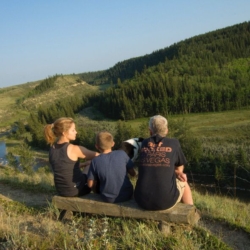Your phone is not your friend.
“People have always tended to be the servants of their technologies.” -Marshall McLuhan
Many couples have come to me for counseling who are actually “too married.” That is, they have an “enmeshed relationship,” characterized by a lack of boundaries, loss of individual identity, and fear of abandonment. In essence, they have no relationship with themselves separate from the relationship with the other.
They are entangled in each other’s web.
Indicators of an enmeshed relationship become obvious when I ask people to separate from their phones for an extended period. Solitude – time alone with your own thoughts – creates anxiety. Fear of missing out. Nervousness. Unease.
For those in enmeshed relationships, the strategy is to step away from the relationship and begin developing your identity away from the relationship. It’s paradoxical: the more you “need” the relationship, the more you need take a break from it.
I advocate the same strategy for those enmeshed in the relationship with their phone. Living an authentic life means developing a relationship with your interior self and the world around you.
Cal Newport offers three strategies I’ve adapted to combat having your phone be your “constant companion”:
- Use the phone foyer method. When you come home from work leave your phone, plugged in, by your front door in the foyer. If you need to use it, you have to go to the foyer and use it there.
- Do at least three things every day outside your house without your phone. Run an errand. Walk the dog. Visit a friend. Go to dinner. You don’t have to divorce your phone, just practice having an identify without it.
- Make your phone less interesting. Take off of it any app where someone makes money off of your attention when you tap on it. Devices and digital media were never designed to meet our emotional needs. They were designed as a tool – for sharing information and communication.
Your phone is not your friend. Your phone is a tool.





